Úbeda and Baeza: An overlooked UNESCO site in Andalucia, Spain
For those who visit Andalucia, the big draws among the UNESCO sites are Granada’s Alhambra (three million visitors a year, pre-pandemic), Cordoba (more than a million) and Sevilla (more than two million). Yet another UNESCO site in the region is practically unknown and well worth visiting. UNESCO’s official name for it is “Renaissance Monumental Ensembles of Úbeda and Baeza.”
Have you heard of Úbeda or Baeza before? When I had the opportunity to take a Fam (familiarization) trip to the area sponsored by the Andalucia Tourist Board, I’d never heard of either town. If you’re a regular reader, you know I love visiting UNESCO sites, so I signed up without knowing a thing about it. This means this is a sponsored post, but the organizers have no influence over what I write.
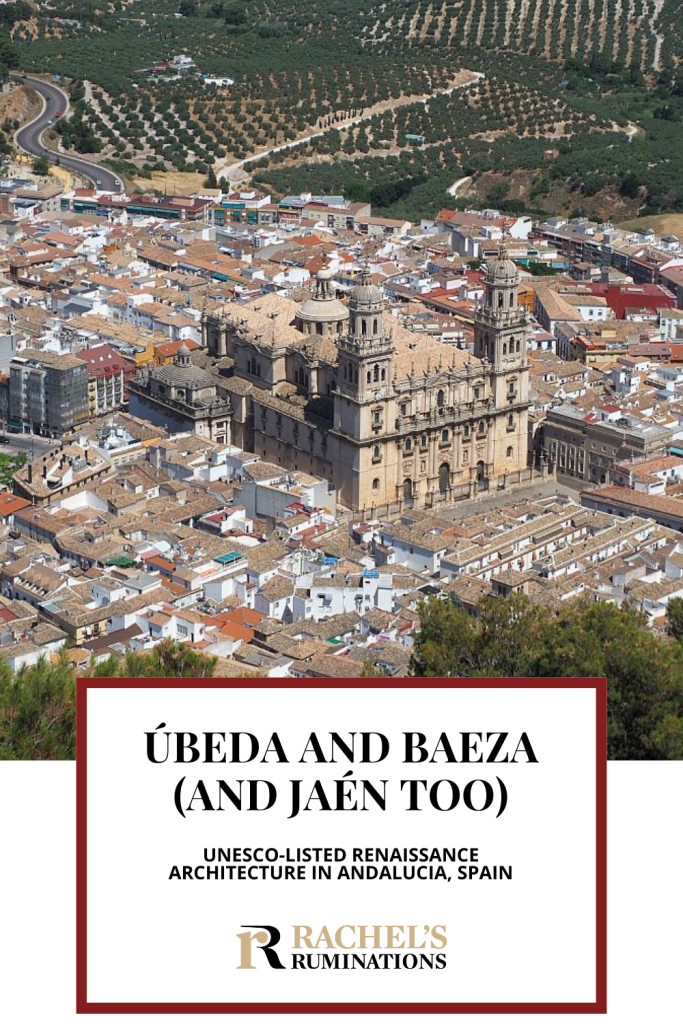
And another disclosure: This article contains affiliate links. If you click on one and make a purchase, I will receive a small commission. This will not affect your price.
A general history of Úbeda and Baeza
While both towns – about 9 km (6 miles) apart – can trace their history back to the Romans, they became important in the Middle Ages as, in effect, border towns. In the 14th century, in an early phase of the Christian Reconquista, the towns were captured from the Moors, Arabs who had ruled the area since the 7th century. These two towns sat on the border between Christian and Arab territory, and, being high up on mountains, they were useful to guard this buffer zone.
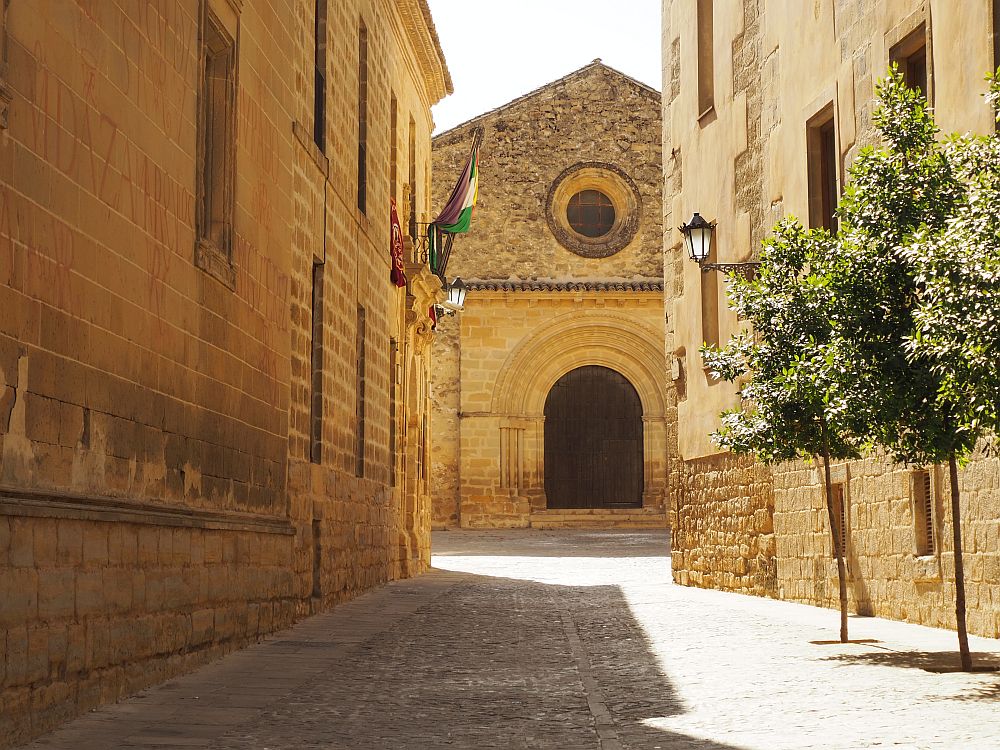
Yet their medieval past is not what makes them a combined UNESCO site. Instead, it’s the upgrades they received in the 16th century. Architects, particularly Andrés de Vandelvira, were brought in to develop public buildings in the Italian Renaissance style that was admired at the time. Each town has a remarkably well-preserved old town with outstanding early Renaissance buildings. Outside, many have ornate stonework, and the interiors are often baroque. If you look for them, you can also spot Arab influences in the décor.
In other words, if you like Renaissance architecture, you’ll love Úbeda and Baeza. (And Jaén, but I’ll get to that later.)
Baeza
The narrow cobbled streets of the old part of Baeza are wonderfully picturesque and atmospheric for a stroll. There are lots of 16th century structures, but here are the highlights to see in Baeza:
Baeza Cathedral, a.k.a. Natividad de Nuestra Señora Cathedral
This cathedral dates to the Middle Ages, so its basic structure is early Gothic. In the 16th century it was redesigned in Italian Renaissance style by Vandelvira. Make sure to go inside and admire the over-the-top Baroque altar added into the Gothic vaulting.
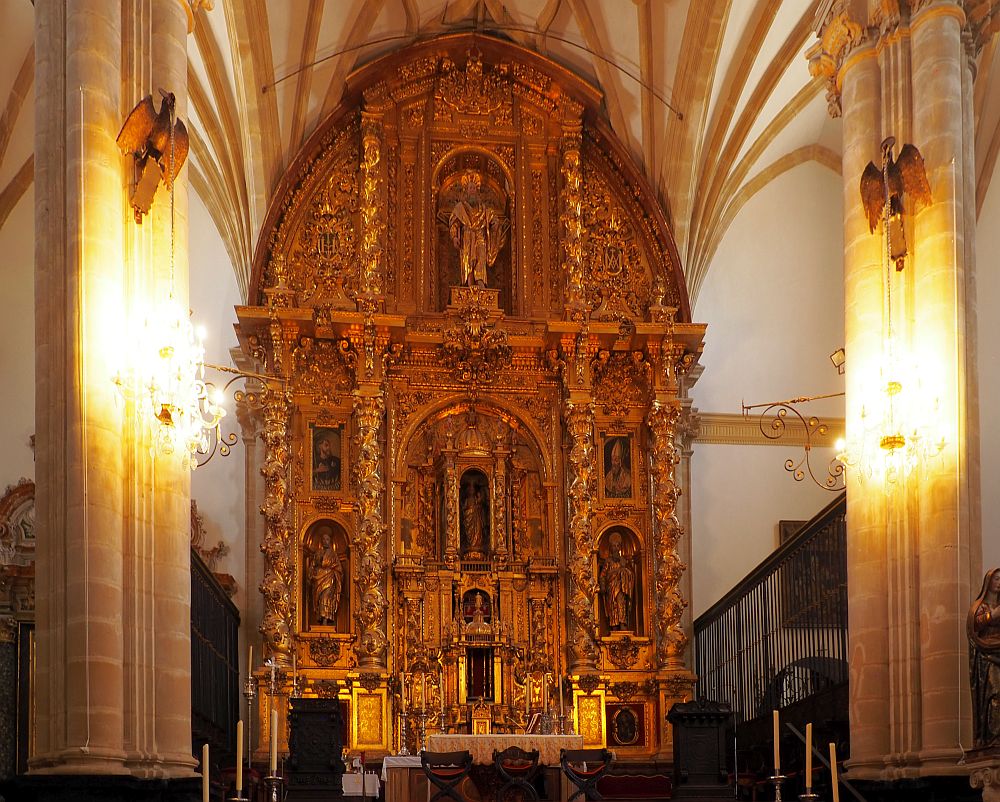
And take a short wander through the small museum there as well, where you’ll see some ancient pre-printing-press religious manuscripts and ornate ecclesiastical garments – check out the embroidery!
Baeza Cathedral: Plaza de Santa María. Open Monday-Saturday 10:00-14:30 and 16:00-19:00; Sunday 10:00-14:30 and 16:00-18:30. Admission: €6. Combined ticket with Jaén Cathedral: €11. Website.
St. Mary’s Fountain
This fountain just outside Baeza Cathedral dates to the mid-16th century.
Santa Cruz Church
This is a medieval church in Romanesque style, but without the extensive update that Baeza Cathedral got. Let your eyes get used to the low light and take a close look at the wall around the altar: you can see traces of medieval frescos.
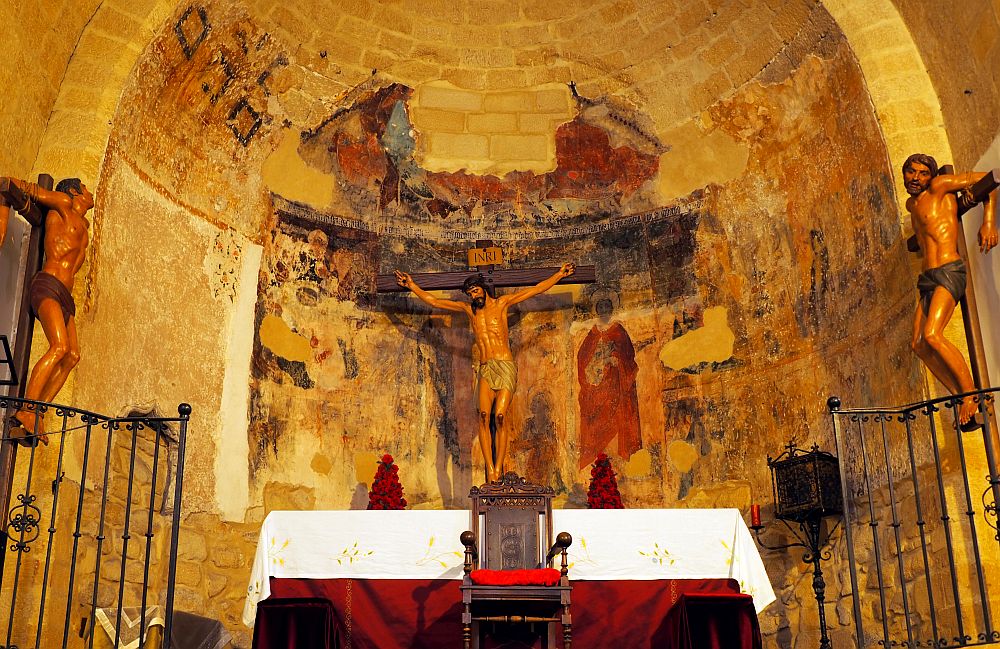
Santa Cruz Church: Plaza de Santa Cruz.
Jabalquinto Palace a.k.a. Antonio Machado International University
Right across the square from Santa Cruz Church is this former palace, now a university. This is a really good example of how architects can update and expand a building while respecting its history. In this case the building was widened later, but the entire original façade remains, with its ornate entranceway.
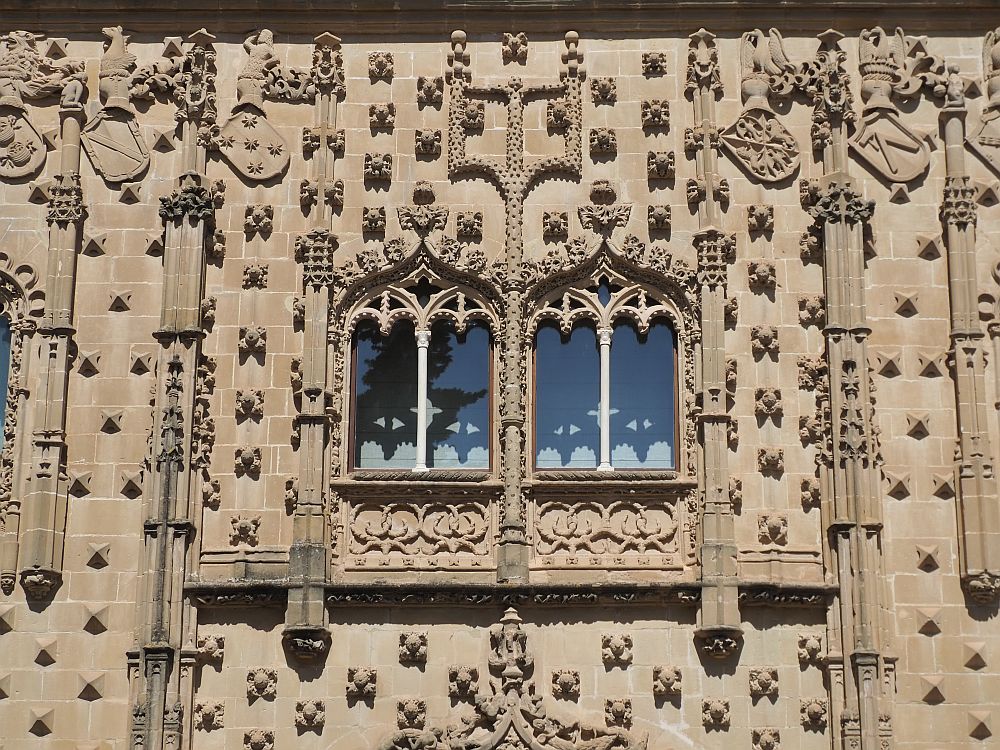
The elegant courtyard inside was typical of palaces and grander houses: columns supporting a shaded portico around the sides, and a fountain in the center. Also notice the ornate Baroque staircase off the courtyard.
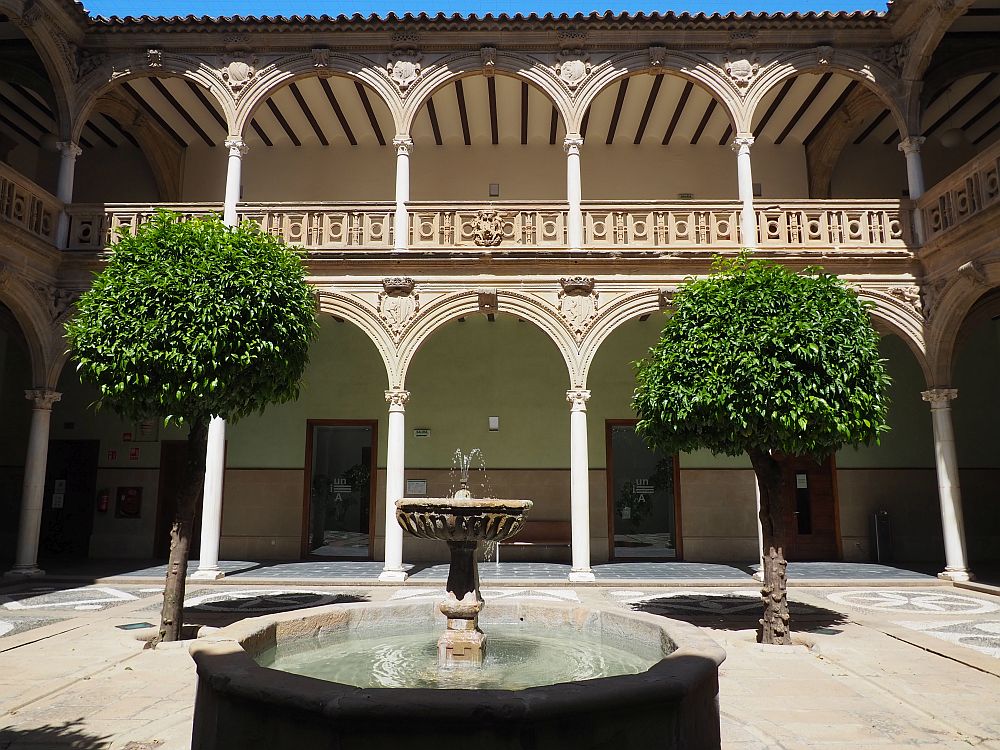
Jabalquinto Palace: Plaza de Santa Cruz. Open Monday-Friday 9:00-14:00. Admission: free.
The Fountain of the Lions
The Fountain of the Lions stands in front of the medieval Jaén Gate. The four lions and the figure on top were moved here in the 16th century from nearby Roman ruins – the lions have deteriorated so much that they’re barely recognizable anymore, but the figure on top is quite pretty.
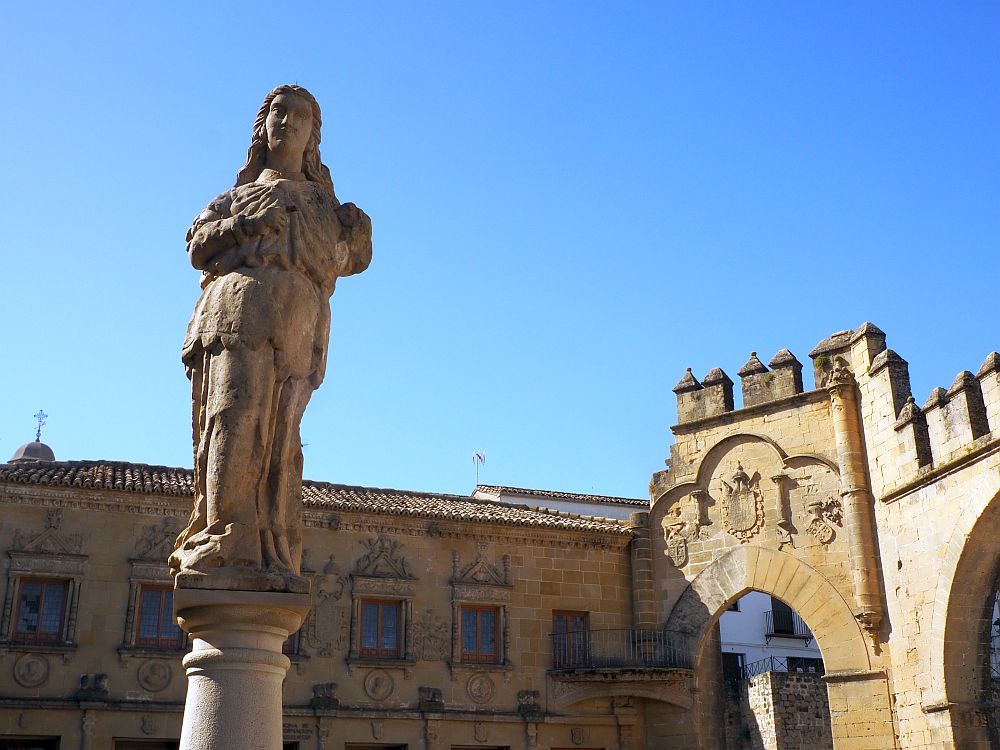
Fountain of the Lions and Jaén Gate: Plaza de los Leones.
Úbeda
Like Baeza, Úbeda has a lovely old town with narrow, cobbled streets: picturesque and winding and lined with centuries-old houses and palaces.
Make sure to find a place to see the view over the surrounding landscape: it’s quite breathtaking with olive groves filling the fields all the way to the far mountains on the horizon. Our guide told us that the province of Jaén, where both Úbeda and Baeza are, has about 65 million olive trees!
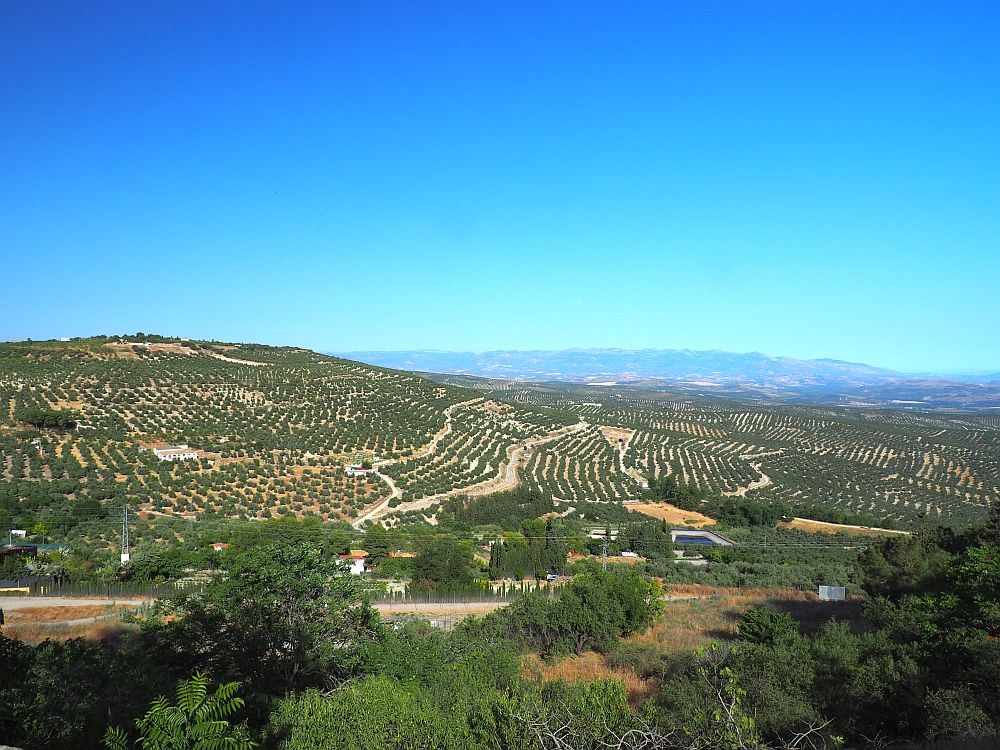
Úbeda is bigger than Baeza and has more to see. Here are some of the main things to see in Úbeda:
El Salvador Funerary Chapel
El Salvador Chapel is on Plaza de Vázquez de Molina: a pretty square that is entirely edged by beautiful Renaissance structures.
The chapel was built in the 16th century as a tomb for a very wealthy and, by the sound of it, very vain man named Francisco de los Cobos, who was secretary to Emperor Charles V. As you view it, imagine a person who sees himself as so important that he would pay for a building of this size and complexity just to serve as a tomb for himself and perhaps a few family members. Admittedly, he was an important man, but it just struck me as showing incredible hubris.
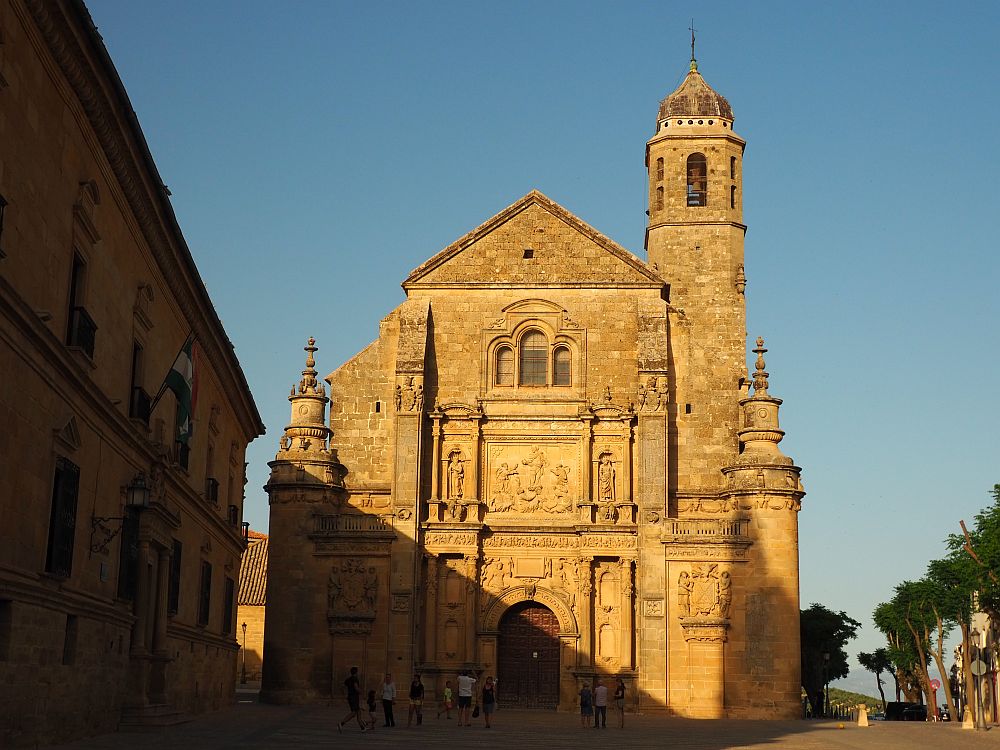
It has elaborate decorations inside and out. Look at some of the less-than-churchly stone-carved figures in the Sacristy, which was designed by – you guessed it – Vandelvira. If you didn’t know better, you’d think this funerary chapel was a full-blown church, and it is these days indeed sometimes used as a church.
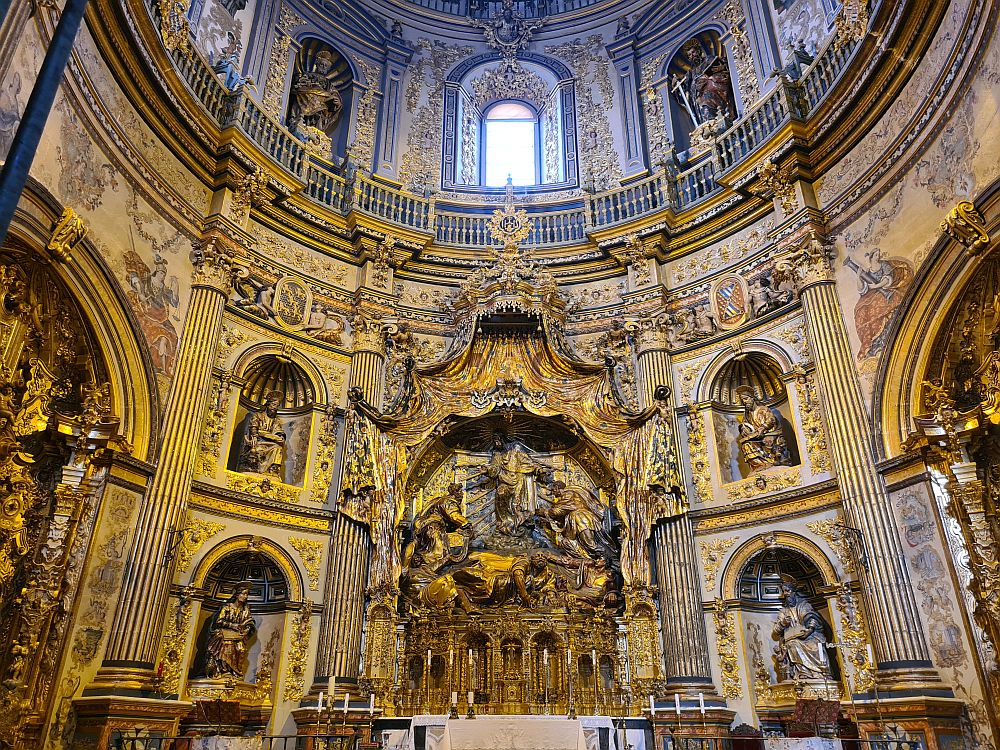
El Salvador Chapel: Plaza Vázquez de Molina. Open Tuesday-Sunday 11:00-14:00 and 17:00-19:00. Admission: €5. Website.
Basilica of Santa María de los Reales Alcázares
This church with its two bell towers is also on Plaza de Vázquez de Molina. It is on the site of a mosque dating to the Arab period, and combines elements of Gothic, Renaissance and Baroque.

Basilica of Santa María de los Reales Alcázares: Plaza Vázquez de Molina. Open hours vary; see website. Admission: €4. Website (in Spanish; use Google translate).
Other buildings on Plaza de Vázquez de Molina
One of many former palaces dotting the old town, the Palacio del Deán Ortega stands right next to the El Salvador Chapel. Designed by Vandelvira – he was a very busy man – it is now a parador. In other words, it’s a hotel. You could stay there and get a taste of Renaissance palace life. Even if you’re not staying there, go inside and take a look at the courtyard, which is relatively original except that it’s been roofed over to prevent the heat from getting unbearable.
Palacio del Deán Ortega a.k.a. Parador de Úbeda: Plaza Vázquez de Molina. Book it here.
There are other Renaissance buildings on the plaza to admire as you stroll, including the palace with the short square tower next to the Basilica: once the Palace of the Marquis of Mancera, it’s now a municipal building.
Palacio Vela de los Cobos
There are plenty more buildings from the same period to see in the old part of Úbeda, including several more palaces. All but one have been converted to other uses.
The one exception is the Palacio Vela de los Cobos, which is still a private residence but opens up for visits with very limited hours. We took a tour led by the son of the current owner, who grew up in this house.
You may recognize the “de los Cobos” of the palace’s name. It wasn’t the same man who was responsible for El Salvador Chapel, but rather his nephew. The family that now owns the palace is unrelated; their ancestor bought it in the 19th century after it had stood abandoned for many years.
Another Vandelvira design, the palace has been significantly changed since it was built in the 16th century – the traditional open courtyard in the center with the graceful columns around the sides is gone. Instead, the space was roofed over and made into a central hall for entertaining. The tour takes in a number of living spaces, one bedroom, and a sprinkling of family history and artworks. For me, the most interesting room is the library. It contains some extremely rare volumes, including, for example, a copy of the Hebrew Bible showing censoring by the Inquisition – with neat lines crossing out many verses and handwritten notes in the margins – and a Bible commentary from Gutenberg’s original printing press.
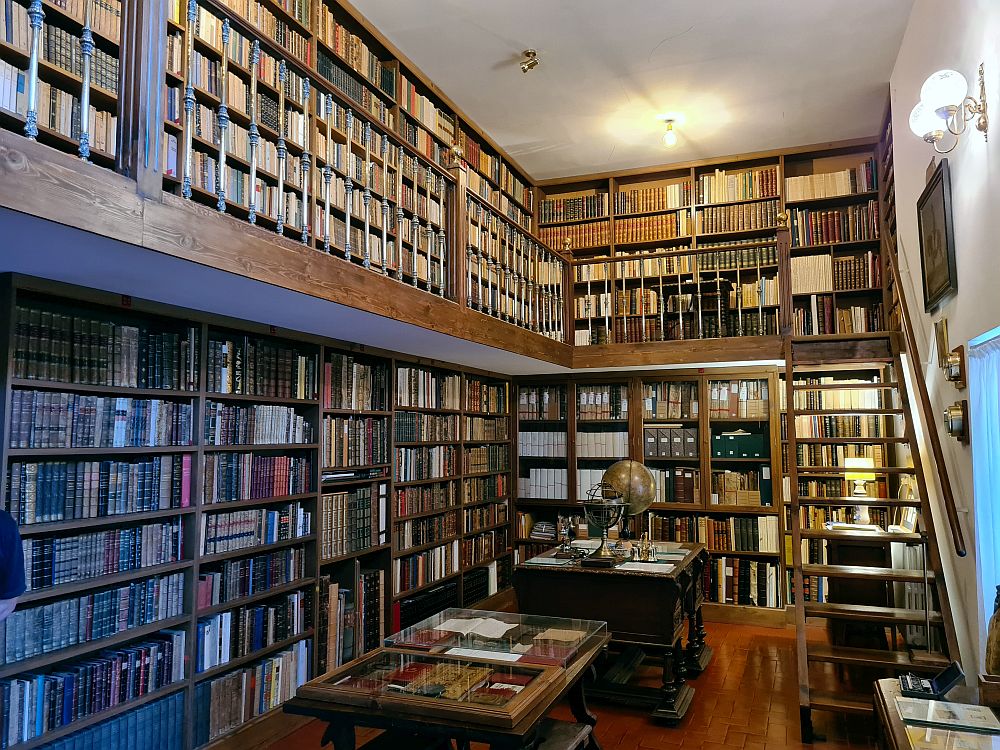
This palace offers another opportunity to taste palace life; the family rents out two apartments in the palace, available for rent through this link.
Palacio Vela de los Cobos: Calle Juan Montilla 3. Tours are Tuesday-Saturday at 13:00 and at 19:00; Sunday only at 13:00. Tours are in Spanish and cost €4.50. Arrange for a private tour in English, which will cost more, through their website. Website (in Spanish; use Google translate).
Hotel Palacio de Úbeda
Another former palace worth mentioning is where we stayed: Hotel Palacio de Úbeda. Only one part of the hotel is in the former palace; the rest is a new build but not too jarringly different. It’s a five-star hotel, so quite luxurious, with a large bathtub in each room. In the summer months, the pool on the roof is open, which certainly has a five-star view.
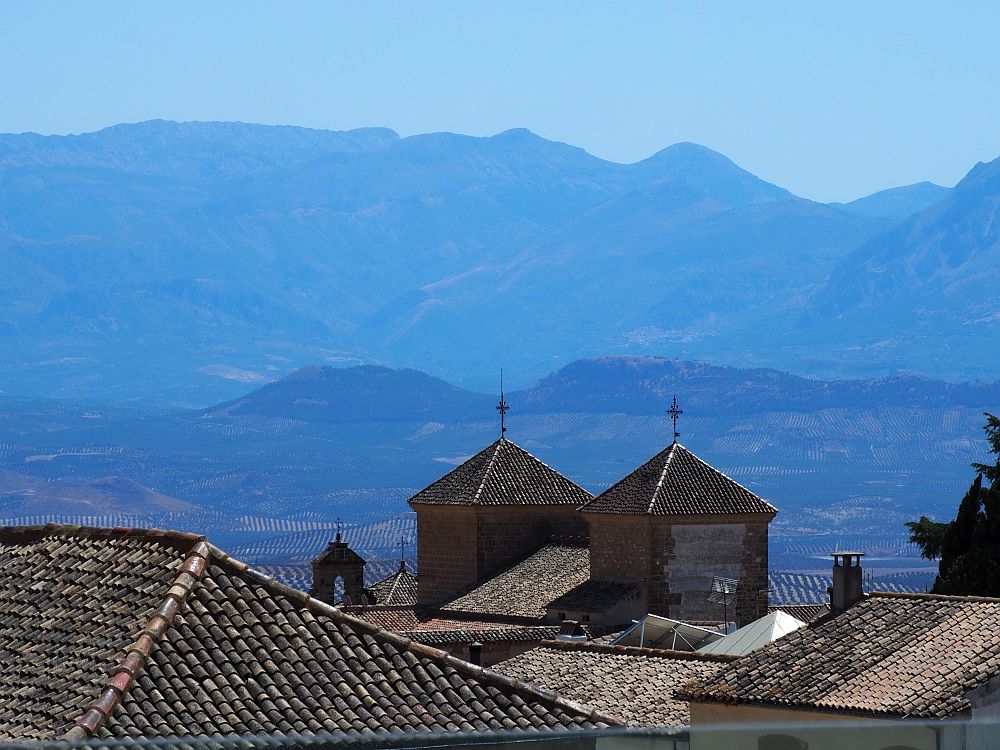
We also ate at the hotel’s restaurant, El Abside, one night and enjoyed an absolutely wonderful and elegant six-course menu inside a stone-walled room, with an antique suit of armor overseeing the proceedings.
Hotel Palacio de Úbeda: Juan Pasquau 2. Book your accommodation at Hotel Palacio de Úbeda.
This 7-day tourist pass includes walking tours in both Úbeda and Baeza plus free or discounted admissions to many sights.
Jaén
Úbeda and Baeza are in the province of Jaén, but there’s also a city called Jaén. Unlike Úbeda and Baeza, the city sits in a valley among the olive groves. If you’re into Renaissance architecture, it’s worth a stop because of one building: the Cathedral of the Asunción.
The Cathedral of the Asunción in Jaén city
Again, this was a work of Andrés Vandelvira, and it is on the UNESCO tentative list as a proposed addition to the Renaissance Monumental Ensembles of Úbeda and Baeza UNESCO site.
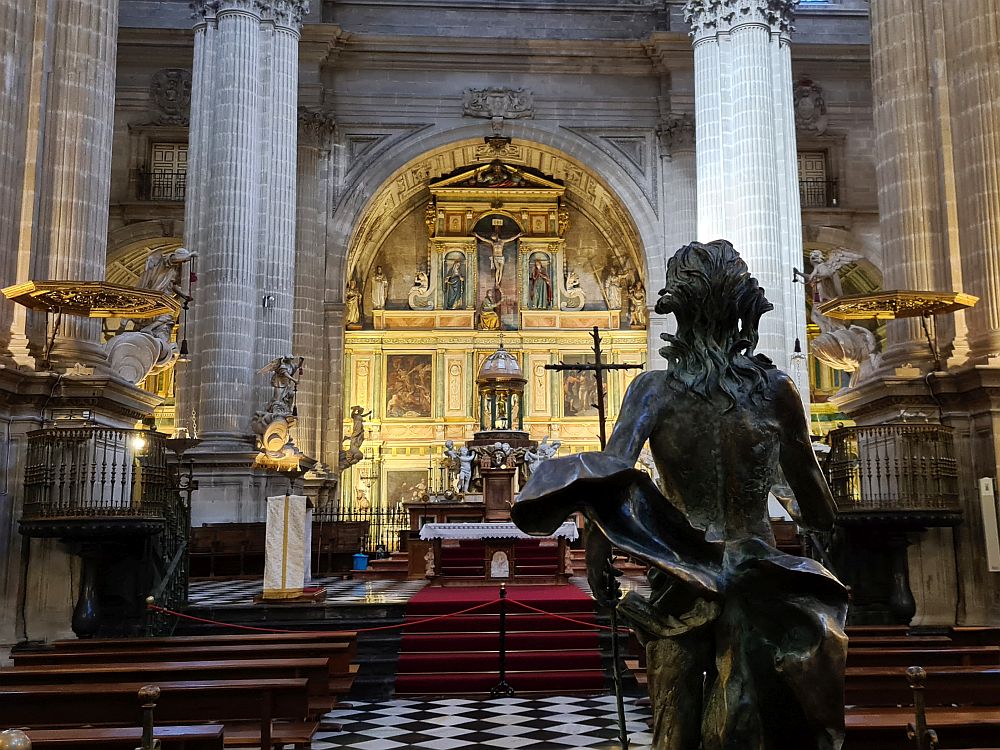
Vandelvira designed this building after his Úbeda and Baeza works, and while it was a redesign of an older 14th-century church, he still was able to shape it entirely to his own vision. To quote UNESCO’s description, “its specific elements are a compendium of characteristics which are typical in Vandelvira´s architecture: the architectural ground plan – formed with three naves and two lateral wings of chapels around the crypt – the central dome and the choir of the central nave; the pillars which are perfectly proportioned; the wide semicircular arches; the existence of two vaulted chapel niches per bay with balconies above them; the pendentive vaults; the hall-structure elevation, which gives great light to the space…”
A hallmark of Vandelvira’s work is a particular kind of ceiling panel with rather classical decoration. It’s such an unusual form that it makes it easy to identify a Vandelvira. You’ll easily spot this element in Baeza Cathedral and in the El Salvador Chapel’s sacristy in Úbeda, as well as here in Jaén’s cathedral.
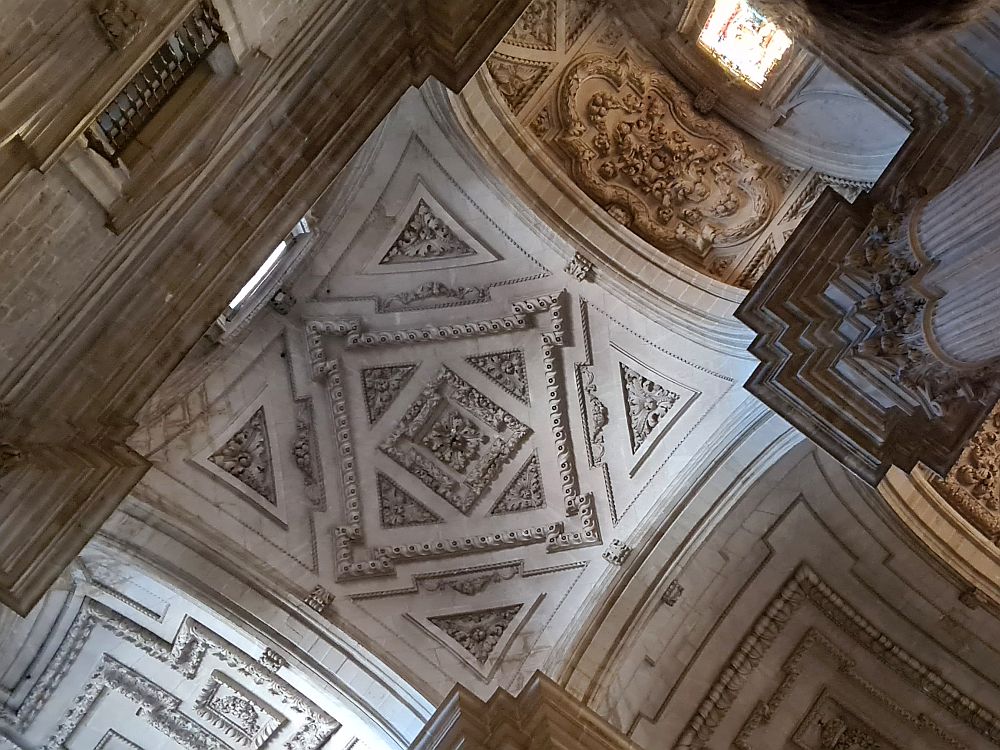
Cathedral of the Asunción: Plaza de Santa María. Open Monday-Friday 10:00-14:30 and 16:30-20:00; Saturday 10:00-20:00 and Sunday 10:00-11:30 and 16:00-19:30. Admission: €6; combined ticket with Baeza Cathedral €11. Website.
The Arab Baths
This is not part of the UNESCO site, but it’s in Jaén, and if you’re there you might as well check it out. Underneath a former palace – now housing several museums – are the remains of an ancient Arab bath house, probably on the site of an earlier Roman bath house. The elegant Arab pillars, the small openings in the ceilings to let light in: together they create an evocative space that echoes a much earlier time, not visible in these towns for the most part. They reminded me of some of the ancient Arab baths I visited in Lebanon, though the style was different: rectangular rooms instead of Lebanon’s round rooms.
Arab Baths: Plaza Santa Luisa de Marillac. Open Tuesday-Saturday 9:00-21:00 and Sunday 9:00-15:00. Admission: free. Website.
The Castle of Santa Catalina
This castle is worth a stop if you visit Jaén. Originally built by the Moors in the Middle Ages, it was used after the Reconquista by Ferdinand III. In the early 19th century Napoleon’s forces used, and altered, the castle. Towering high on a hill overlooking the city of Jaén, the views of the city and the mountains are outstanding, especially if you walk out to the point with the large cross. As castles go, it’s not that special, but the views make it worth it.
The newer – 20th century – building next door to the castle is a parador: a four-star hotel. While I didn’t stay there, I can imagine that sunrises and sunsets would be stunning from that vantage point. What I did do was eat there, in their restaurant called El Condestable, as part of the Fam tour. It was a tasting menu with an array of dishes that were all rooted in the region, yet were unusual in some way, and presented very elegantly. If that meal is any indication of their usual menu, I highly recommend this restaurant.
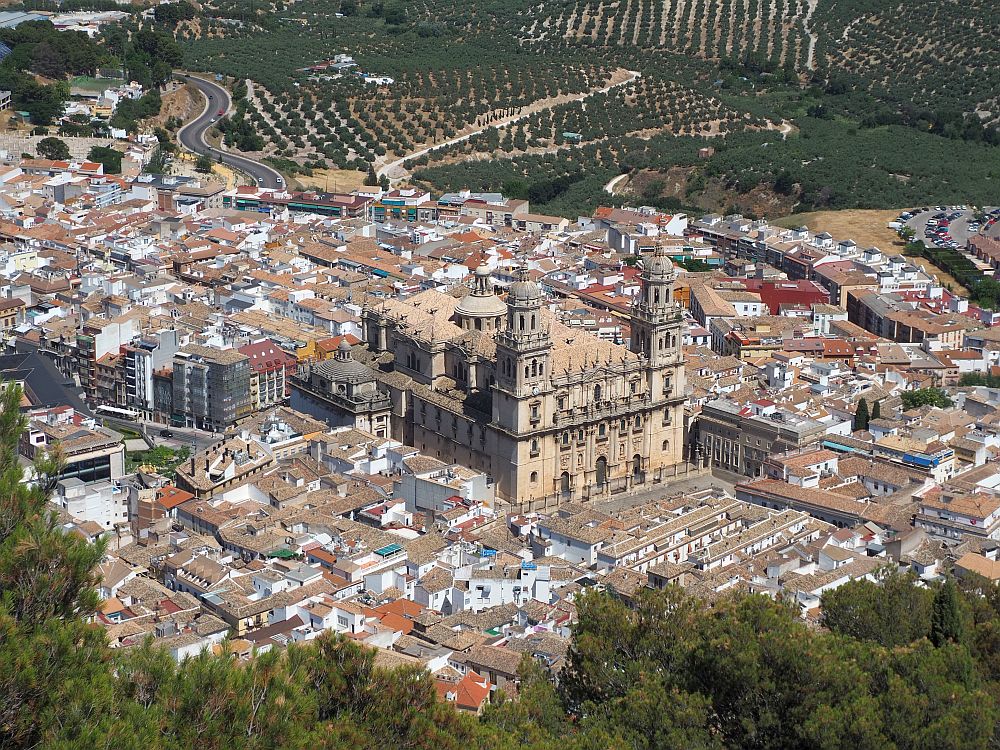
The Castle of Santa Catalina: Carretera al Castillo y Neveral. Open mid-June to mid-September Mondays-Saturdays 10:00-14:00 and 17:00-21:00 and Sundays 10:00-15:00; mid-September to mid-June: Mondays-Saturdays 10:00-18:00 and Sundays 10:00-15:00. Admission €3.50. Website (in Spanish. Use Google Translate).
Parador de Jaén: Castillo Santa Catalina. Accommodations.
A visit to Andalucia
If you’re in Andalucia to see any of the popular sights like Cordoba or Granada, you’re probably interested in architecture and history anyway. So go check out Úbeda, Baeza and Jaén while you’re in the area. If you really don’t have time for all three, at least see Úbeda, since it has the highest concentration of beautiful Renaissance architecture within a very small area. You won’t regret it!



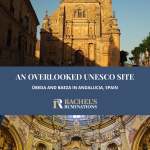
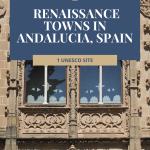

You are so right! I never heard of this UNESCO site! Thanks for the informative article!
I’m having fun whenever I travel visiting any random UNESCO site that’s on the way, whether I’ve heard of it or not! Just went to one today, as a matter of fact, in Albania, called Butrint.
Hi Rachel. A great round up of the FAM trip that got away!!
Sorry you didn’t make it!